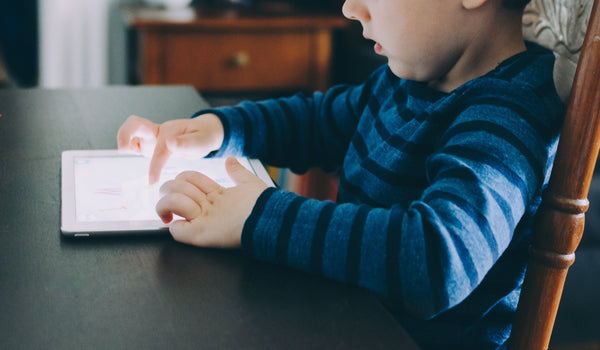Teaching Children How To Talk About Feelings

The first three years of life are critical periods for language development. Many parenting books emphasize the importance of supporting this development through engagement with a caregiver. As a parent, I read that I had the potential ability to interpret my child’s different cries and would then be able to respond appropriately. Honestly, it was a guessing game at times and continues to be so even as they have gotten older. The truth is, parenting is challenging and sometimes we have no idea why our kids are crying or screaming. However, teaching children ways to communicate more effectively, particularly when it comes to emotions, helps to lessen some of the challenges ahead.
Importance of an emotion vocabulary
A child’s ability to recognize and verbally communicate feelings is a skill that is just as important as learning to read and write. It is a skill that helps us navigate relationships and self regulate our own emotions. When we can talk about an intense feeling, it may become less overwhelming and something more tangible that we can deal with. When we have words or labels to identify our emotions, those around us are better able to validate and effectively support our management of those feelings. In turn, this helps us internalize the validity of our own emotions and utilize skills to try to cope with them ourselves.
Teaching a vocabulary for feelings
Now that we’ve established the importance of having a vocabulary for feelings, let’s talk about how to teach children this vocabulary. One way is to help a child recognize what the feeling or emotion looks like and then pair it with the appropriate word. Great tools to help with this can be found in the My Moods, My Choices visual aid resources:
These visual aid resources can be incorporated into daily routines. Playing games with kids can teach and reinforce their ability to label emotions. Here are some suggestions on how this can be done:
- As caregivers, we can describe how we are feeling in particular situations. For example, “I’m feeling frustrated there is so much traffic on the road.”
- Play a game by asking a child to identify particular emotions of characters in books or TV shows.
- Take turns guessing what emotion the other person is trying to express.
- Discuss how someone might feel in a particular situation. For example, “How do you think Jack felt when his toy was taken away?” or “How do you think Mary is feeling about moving away?”
Additional great suggestions can be found in publications by Vanderbilt University and the Georgetown University Center for Child and Human Development.
Learning a language helps us navigate our social world
Just like learning a native language in a foreign country to more effectively explore and navigate that country, learning a language for our feelings helps us navigate our social world. Once this language is learned, we can more effectively ask for help, help those around us, and cope with our emotions. Regulating our own emotions is an important skill to develop. Suggestions on how to develop this skill can be found in the My Moods, My Choices Flipbook and a website such as Kids Matter.
Our emotional development is just as important as our physical development. As human beings, we live in a social world and navigate it with different degrees of challenges. Trying to equip ourselves with the language and skills to help us do this effectively benefits all, especially our children.
Written by Kari Hancock, MD, a child psychiatrist and mom, who has worked with kids, caregivers, teachers, and medical professionals for over 13 years.
Also in Blogs

Does Your Child Live in a High-Conflict Environment?

“What's On?” The Impact Of Media On Kid's Emotional Well-being

